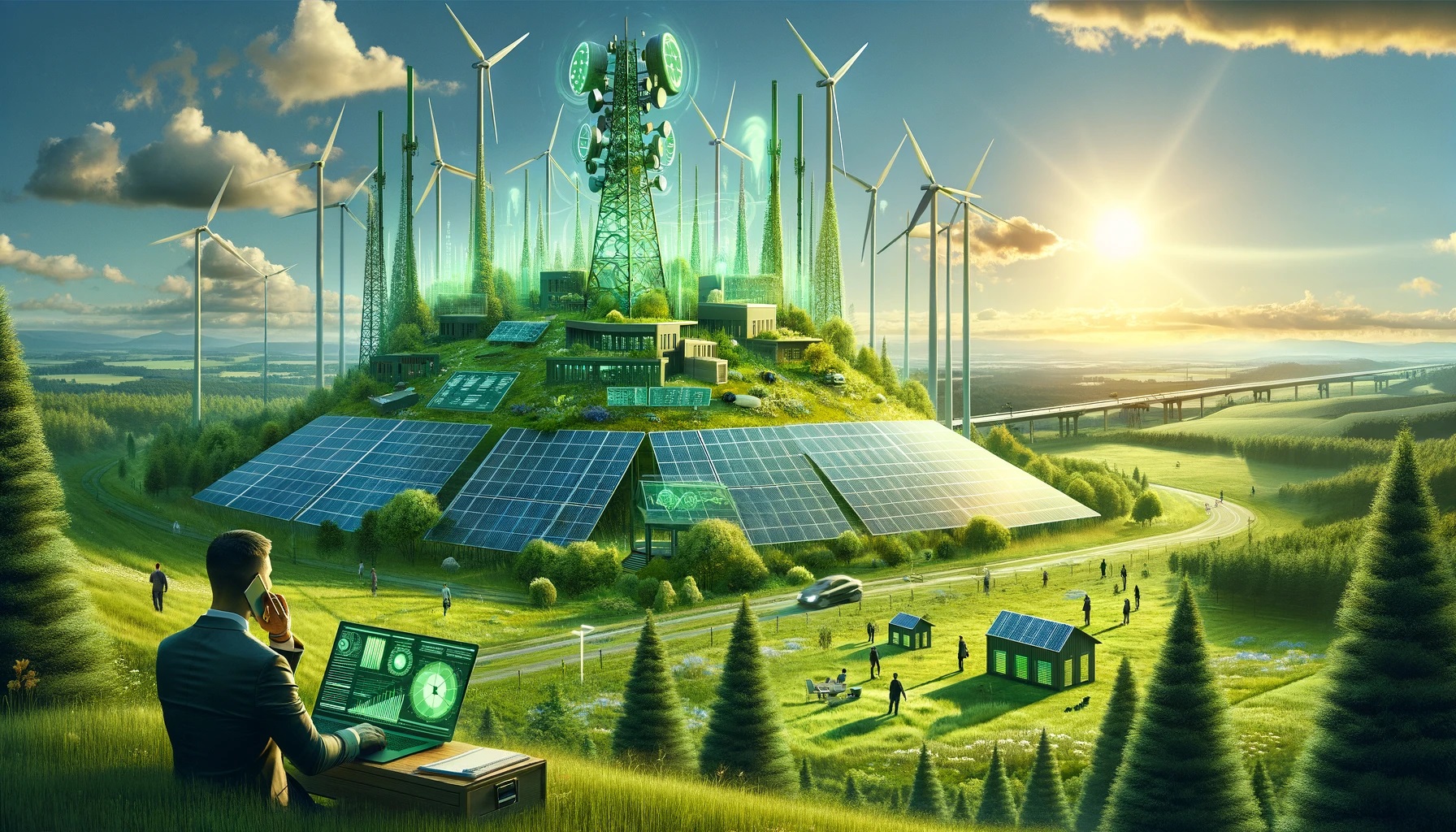Introduction: A Green Shift in Telecommunications
As we embrace 2024, the telecommunications industry stands at a pivotal crossroads, facing the dual challenge of expanding connectivity while significantly reducing its environmental footprint. This sector, fundamental to our globalized world, is now spearheading a green revolution, adopting sustainable practices and technologies to reshape its future. This article explores the transformative journey towards sustainability within telecommunications, highlighting the innovations, strategies, and challenges as the industry goes green in 2024.
The Environmental Footprint of Telecommunications
Telecommunications has traditionally been energy-intensive, with vast networks of data centers, towers, and infrastructure consuming significant amounts of electricity. Additionally, the production and disposal of devices contribute to electronic waste (e-waste), posing further environmental challenges. Recognizing these impacts, the industry has taken decisive steps towards sustainability, aiming to mitigate its contribution to climate change and resource depletion.
Renewable Energy: Powering the Future
One of the most impactful strategies for sustainable telecommunications is the shift towards renewable energy sources. In 2024, leading companies are increasingly investing in solar, wind, and hydroelectric power to run their operations. This not only reduces greenhouse gas emissions but also sets a precedent for clean energy use in global industries. Case studies from around the world demonstrate how renewable energy projects are successfully powering data centers, base stations, and office buildings, marking a significant stride towards carbon neutrality.
Energy Efficiency: Innovations and Optimizations
Beyond sourcing clean energy, enhancing energy efficiency stands as a cornerstone of sustainable telecommunications. Advances in technology have led to the development of more energy-efficient hardware, from servers to smartphones. Network optimization algorithms also play a crucial role, minimizing energy use without compromising service quality. These innovations contribute to a substantial reduction in the industry’s overall energy consumption, exemplifying how technological progress can align with environmental stewardship.
Reducing E-Waste: The Circular Economy Approach
Addressing the challenge of e-waste, the telecommunications industry is embracing the principles of the circular economy. This approach prioritizes the repair, refurbishment, and recycling of devices, extending their lifecycle and reducing waste. In 2024, initiatives promoting device take-back schemes and recycling programs are more prevalent, encouraging consumers to participate in the circular economy. Additionally, manufacturers are increasingly focusing on designing products that are easier to recycle, further diminishing the environmental impact of electronic devices.
Sustainable Infrastructure: Building for the Future
The construction and maintenance of telecommunications infrastructure also present opportunities for sustainability. Green building practices are being integrated into the design of data centers and network facilities, incorporating energy-efficient cooling systems and sustainable materials. Moreover, the deployment of new technologies such as small cells, which require less power than traditional cell towers, reflects a shift towards more environmentally friendly network expansion methods.
Challenges and Solutions on the Path to Sustainability
While the industry’s commitment to sustainability is evident, challenges remain. Balancing the demand for increased connectivity with environmental goals requires ongoing innovation and investment. Regulatory frameworks and industry standards play a critical role in guiding these efforts, ensuring that sustainability becomes an integral part of telecommunications. Collaboration among stakeholders, from governments to consumers, is also essential to drive the industry towards its green objectives.
Looking Ahead: The Future of Sustainable Telecommunications
As we look to the future, the telecommunications industry’s journey towards sustainability appears both promising and essential. The integration of green technologies and practices is not only mitigating environmental impacts but also opening new avenues for innovation and growth. In 2024, the vision of sustainable telecommunications is becoming a reality, setting a benchmark for other sectors to follow in the pursuit of a more sustainable and connected world.
Conclusion: Embracing a Greener Future Together
The telecommunications industry’s green revolution in 2024 is a testament to what can be achieved when innovation meets environmental responsibility. By redefining connectivity through the lens of sustainability, the industry is not only addressing its ecological footprint but also contributing to a broader societal shift towards sustainability. As we continue to rely on telecommunications to bridge distances and bring us closer, the industry’s commitment to going green ensures that this connectivity enriches both our lives and the planet.
